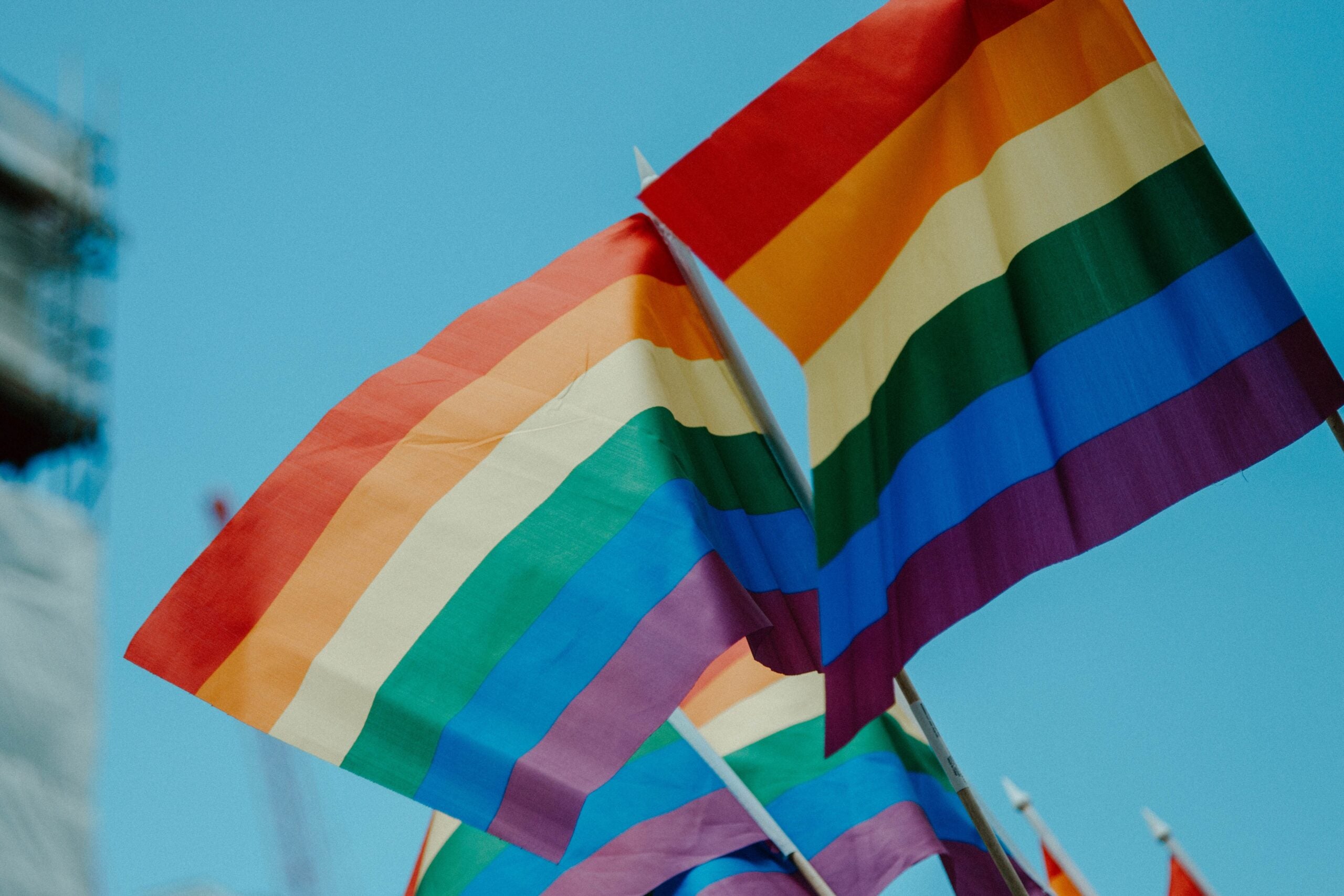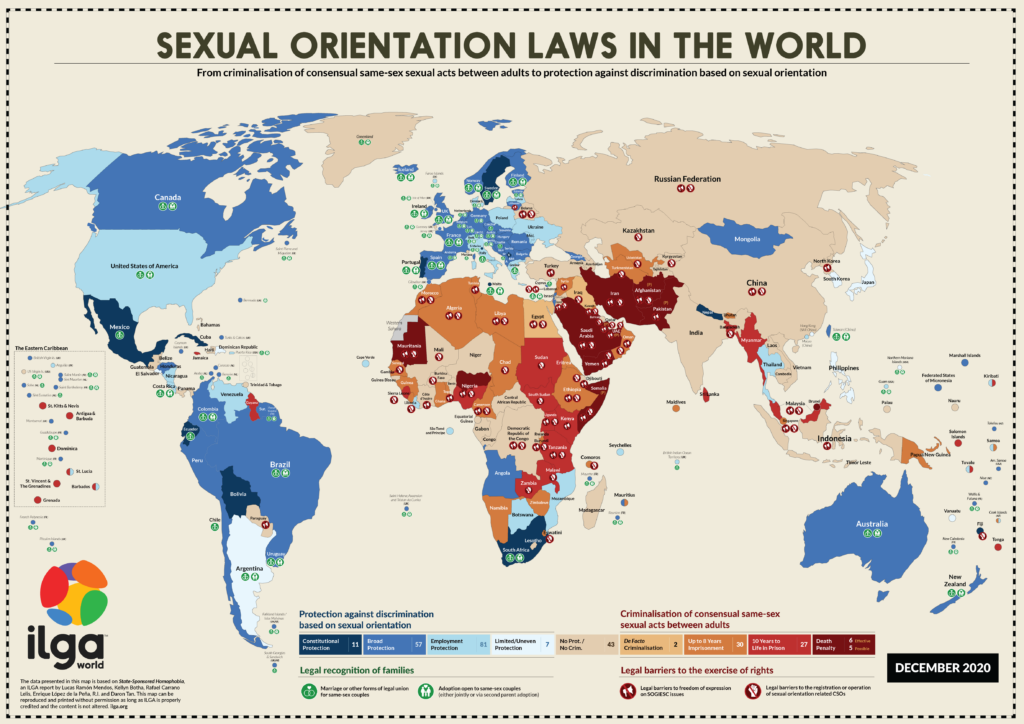
For one-twelfth of the year, big business has Pride, and Pride is big business. June is global Pride Month, when lesbian, gay, bisexual, and transgender people, as well as a range of other gender and sexual minorities, go rainbow under the LGBT+ banner.
In recent years, businesses have made greater and grander advertising campaigns to show their support of LGBT+ people. And as the volume of corporate support for the Pride movement has grown, so too has criticism of it.
Just as some corporations are accused of using token renewable energy investments as “greenwashing” for their overall disastrous environmental impact, some also stand accused of “rainbow-washing” their reputations by showing skin-deep support for LGBT+ rights.
In 2022, most larger Western companies have at least a small section of their websites devoted to the stories of LGBT+ employees they have supported. Many have gone further, using multi-coloured brand identities or basing their reputation advertising around their work with LGBT+ people.
Not all in the energy sector have taken pride in flying the flag, but some of the largest supporters of LGBT+ rights lie within the sector. At the same time, energy companies represent some of the biggest magnets for rainbow-washing accusations.
Morality, economy, publicity, and humanity each pull on decision makers in the sector, but is it even possible for profit-driven companies to push together, in the right direction? We spoke to J Andrew Baker, coordinator of donor relations at global LGBT+ rights charity ILGA World, about what can make a Pride campaign worthwhile.
How well do you really know your competitors?
Access the most comprehensive Company Profiles on the market, powered by GlobalData. Save hours of research. Gain competitive edge.

Thank you!
Your download email will arrive shortly
Not ready to buy yet? Download a free sample
We are confident about the unique quality of our Company Profiles. However, we want you to make the most beneficial decision for your business, so we offer a free sample that you can download by submitting the below form
By GlobalDataWho are corporate Pride campaigns for?
Most corporate Pride campaigns centre on the stories of employees discovering themselves. On a practical level, these give marketers a story to tell, providing human examples of a company’s good work. Corporate decision-makers and stakeholders also see these, reassuring them in their backing of the company.
Sometimes, these corporate benefits lose sight of the subjects themselves. Corporate Pride campaigns claim they empower employees, allowing them to feel accepted and comfortable in their workplace.
In its surveys, UK energy trade body Offshore Energies UK (OEUK) found that 4% of survey respondents in member companies identified as lesbian, gay, or bisexual. In a separate question, 1% of workers identified as transgender. Generally, in both energy companies just as in government, far fewer statistics are available around transgender and intersex people, as well as the other gender and sexual minorities included within the “+” of LGBT+.
Beyond this, another 6% “prefer not to say”, which includes those who do not feel at home with other labels, generally referred to as queer. However, queer people are joined in the “prefer not to say” box by those who object to the asking of the question. As a result, knowing the exact number of queer people in any given organisation becomes difficult.
Of OEUK’s respondents, 57% described their company’s “diversity and inclusion culture” as strong or very strong. At the same time, 14% described it as weak or non-existent. However, these scores come from all respondents – those who did not identify as heterosexual consistently rated their companies’ diversity and inclusion efforts as worse than the overall average rating.
The currency of LGBT+ stories for corporate Pride campaigns
Of those who identify as LGBT+, 20% will experience discrimination in the workplace in any year, according to EU studies. Although workplace discrimination is banned throughout the bloc, most incidents go unreported.
In contrast, most corporate Pride campaigns aim to empower employees and highlight a more inclusive workplace. A line from the story of James Fowler, an engineer with Shell, gives a perfect example. He writes: “I’m so grateful to work for an organisation that not only supported the launch of this network but constantly strives to become a more inclusive space for its employees.”
These stories represent the tangible assets of rights work. They are inherently human, but become a depersonalised currency in a business environment.
Baker explains: “Corporate funding, in most organisations I know, is primarily looking for a return on investment. That’s a reality; it’s business money, even when it’s corporate social responsibility money. Corporations are looking for ways to support being more inclusive, looking for ways to be more visible within queer communities… These are all realities. Nobody is donating money just to donate money.”
Just as with greenwashing, Baker says that companies must back pride marketing campaigns with tangible action or expect failure. He says: “Fundamentally, one of the first things the public need to consider [in a corporate Pride campaign] is whether the company is actually working with the community.”
“If a company attempts to engage in only some ESG issues, it presents a risk”
Many corporations aim to show their support for human rights, but oil and gas companies start at a disadvantage. The nature of their business does not comply with many ESG investment criteria and would prevent them from working with organisations like ILGA World. A reputation for environmental and corporate crimes in the sector also makes life more difficult for PR teams.
If a company aims its messaging at more-informed people, it must expect them to be discerning. Baker says: “If they aren’t doing other [ESG] work, Pride campaigns can very much be seen as a distraction. Younger generations tend to be very aware of who they invest in and engage with. If a company is attempting to engage with the younger generation without doing the other work that generation wants it to do, I think it actually presents a greater risk to engage in a Pride campaign.
“People are going to call them out; they do it all the time. People expect more than just doing a product campaign. What’s behind it matters, and the people who that matters to the most often care about other issues, such as environmentalism, women’s rights, and equality.
“As an example, a company can feature stories about its LGBT+ employees, but then get called out on its gender pay gap. A lot of that’s because when you state you’re a more equitable employer, you’re opening yourself up to more critique of other areas that you’re failing in.”
In the oil and gas sector, this is essential. Corporate Pride campaigns do not speak only to queer and LGBT+ people, but to their allies. Broadly speaking, younger generations are much less heterosexual and much more socially aware than other generations. This is the generation that oil and gas needs to recruit for the future, and getting the messaging right for them is vital.
The business case for LGBT+ support
Regardless of sector, all companies share an element of distrust form the public. Part of this comes from their faceless, monolithic nature, lacking a personality that the public can empathise with. However, this impersonal nature can actually work to the advantage of human rights organisations, giving them otherwise unavailable power.
Baker says: “Corporate donations are often one of the only forms of donations that are unrestricted. When you look at government or foundation money, that isn’t the case. Corporate donations actually allow responsiveness from LGBTI-led organisations, without having to navigate what the funder expects from us. These donations become more of a relationship dialogue, about what we are doing, and what we should be supporting.
“When working with a company, rights organisations want to know that the company is engaging in that dialogue. It can’t just be ‘here’s your $10,000 for next year’.”
The public distrust most wide-scale corporate altruism. Ironically, nobody pretends that corporate Pride campaigns are entirely altruistic. Baker says: “In most organisations I know, corporate funders are looking at their return on investment. That’s the reality; it’s business money, even when it’s intended for corporate social responsibility.
“Oftentimes, partnering with a charity is the return on investment, because it offers the visibility [of a company taking social action]. It also allows companies to tell the stories of people they want to advocate for.
“As an example, if a company really wants to support young people, and they came to us in good faith and passed our ethical standards, we could say right from the get-go that we’ve supported the formation of a global queer youth network, and we have the stories of those people you are supporting that you’re able to utilise.”
Why do mid-size companies have worse representation that smaller or larger ones?
If a business relies on the stories of its employees, then different sizes of business will work in very different ways.
In a small business, everyone knows everyone else, and staff support is personal, personalised, and relayed one-to-one. In contrast, large businesses have the resources to set up full-scale impersonal support, including human resources officers, dedicated employee resources groups, and links to external organisations dedicated to employee welfare.
Between these two extremes, problems emerge. In the OEUK survey, companies of less than 50 employees or more than 1000 employees scored highest on its diversity and inclusion index. Mid-sized businesses saw a small, but noticeable, slump.
Baker says this lack of coverage comes partly because of how governments fund business development.
“Governments are not necessarily resourcing those mid-sized companies to enable effective changes,” he says. “That goes back to business development funding. There’s lots of money available for product development, lots of money available for profitability expansion, but there isn’t always money to fund authentic engagement with inclusive activities.”
Treating global pride as a local movement
Pride is a global movement, but Baker says global announcements are far from the whole story: “Sometimes, the media catches a big global announcement from a company, but misses the many national announcements that happen – or don’t happen.”
Social media allows companies to package their Pride stories for easy consumption and circulation. These words put stars in the eyes of PR teams, hoping to put their message around the world. But, Baker says, this would miss the point.
He continues: “In developed nations, Pride has gone from an act of protest to act of celebration. That’s why, in some cities, you’re starting to see many smaller Pride celebrations, such as Black Pride or trans Pride.
“Social media has allowed a stronger and quicker globalisation of Pride. We saw this in the pandemic, where Pride campaigns struggled, but came together for substantial online events. In places where Pride can’t safely happen in physical spaces, digital forms of Pride have become very impactful. As an example, almost every country in the Middle East participated in online Pride events.”

This is where companies can speak for their LGBT+ employees across the world, regardless of local laws. The increasing complexity and density of social media has also allowed for smaller Pride movements, and these are where businesses should start when setting up a corporate Pride campaign.
Baker says: “Businesses should 100% be looking at making Pride decisions at a local level, because Pride is a local act of visibility. While Pride is a global movement, Pride is about making change in a local community. It’s about creating visibility in a local community, in a big city or a small town. Pride always has that localisation factor.
“Raising a Pride flag might not seem like a big deal, but it tells that 16-year-old living in that small town that their community is trying to accept them. In the same way, this happens internally within companies. LGBT+ people probably work in every single corporation, but they aren’t always visible. That visibility matters to their quality of life.”







